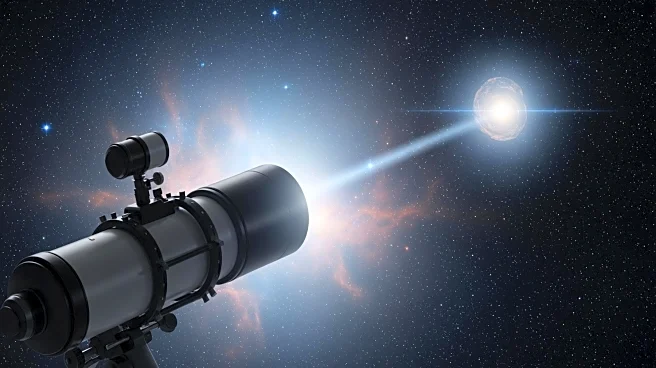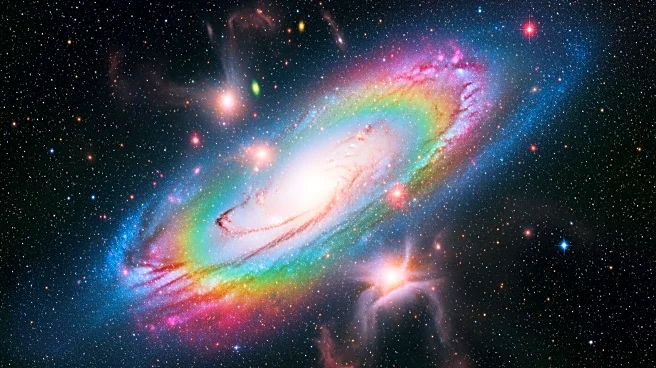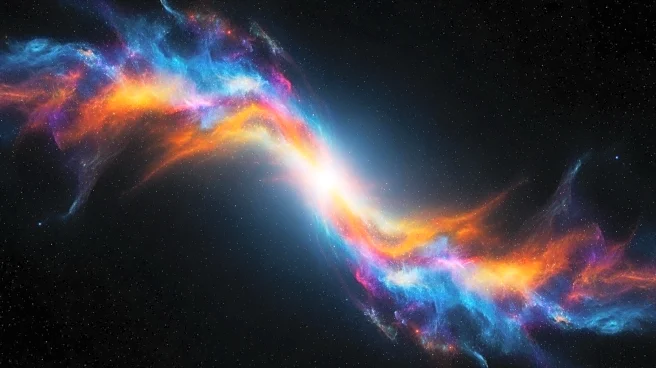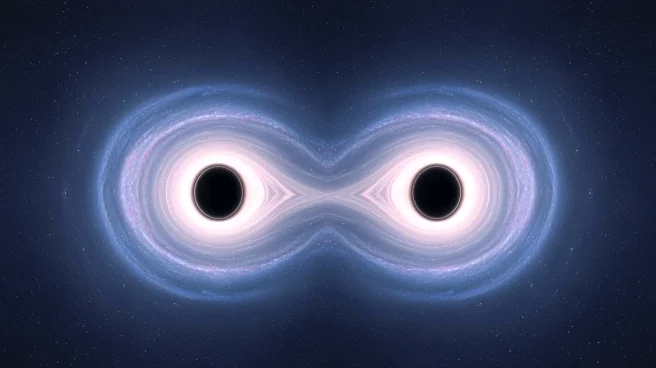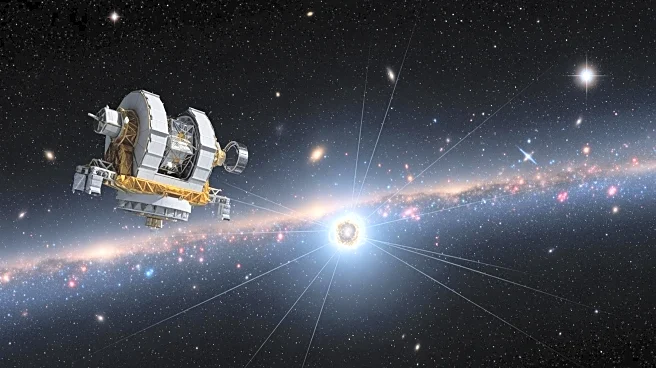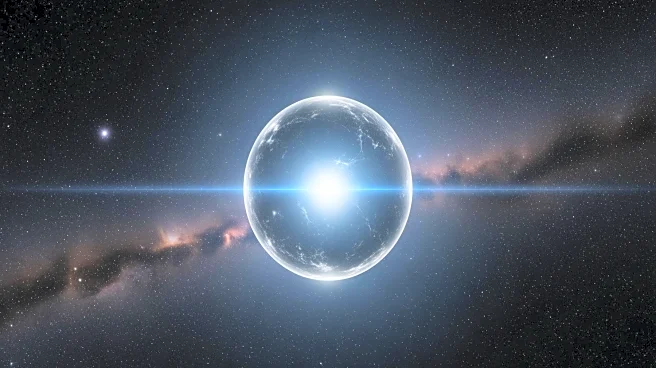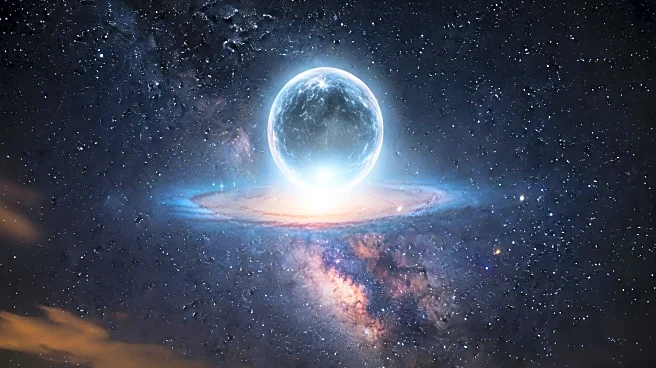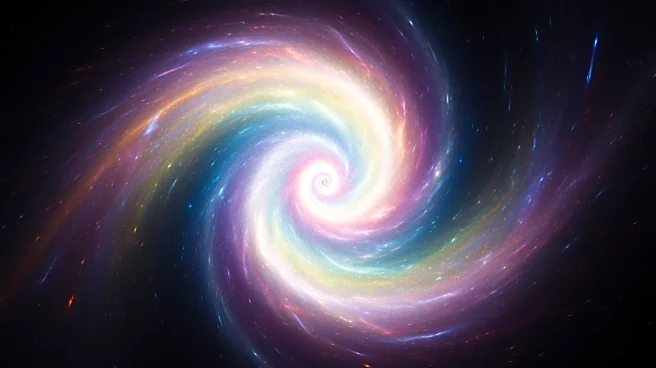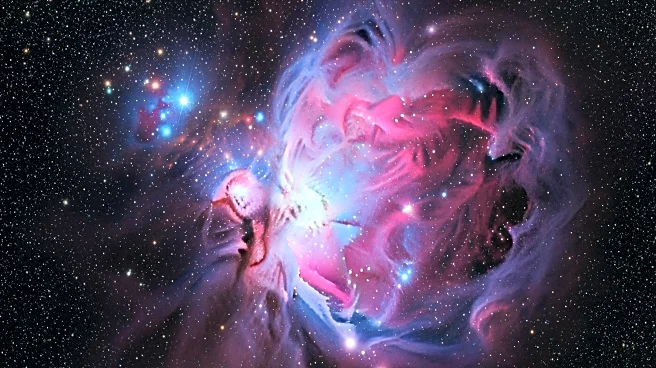What's Happening?
Astrophysicists at Johns Hopkins University are exploring a mysterious gamma-ray glow emanating from the Milky Way's center, which could be evidence of dark matter particles annihilating each other. Known
as the Galactic Center GeV Excess (GCE), this glow has puzzled astronomers since its discovery in 2009. The research suggests that the glow could be equally attributed to dark matter annihilation or millisecond pulsars, with a slight edge for the dark matter hypothesis. The study involves simulations of Milky-Way-like galaxies, mapping the density and distribution of dark matter and comparing it with old stars as proxies for millisecond pulsars. The findings indicate that the dark matter halo might be slightly flattened, producing a boxy gamma-ray glow similar to that expected from millisecond pulsars.
Why It's Important?
This research is crucial in the ongoing quest to understand dark matter, which is believed to dominate the Universe and hold galaxies together. Identifying the source of the gamma-ray glow could provide the first direct evidence of dark matter, a breakthrough in astrophysics. The study's findings could influence future observational strategies and the design of upcoming observatories, such as the Cherenkov Telescope Array. Confirming the dark matter hypothesis would have profound implications for physics, potentially leading to new theories about the Universe's composition and the forces governing it.
What's Next?
The researchers anticipate that new data from upcoming observatories will help distinguish between the dark matter and millisecond pulsar scenarios. These observations could confirm one theory over the other or reveal new mysteries. The study highlights the need for continued exploration and refinement of models to better understand the gamma-ray glow's origins. Future research may focus on the small-scale texture of the GCE, which has been explored in other analyses, to further narrow down the possibilities.
Beyond the Headlines
The study underscores the complexity of cosmic phenomena and the challenges in identifying dark matter. It highlights the importance of advanced simulations and interdisciplinary approaches in solving astrophysical mysteries. The potential confirmation of dark matter as the source of the gamma-ray glow could lead to a reevaluation of existing theories and models, influencing future research directions in astrophysics.
